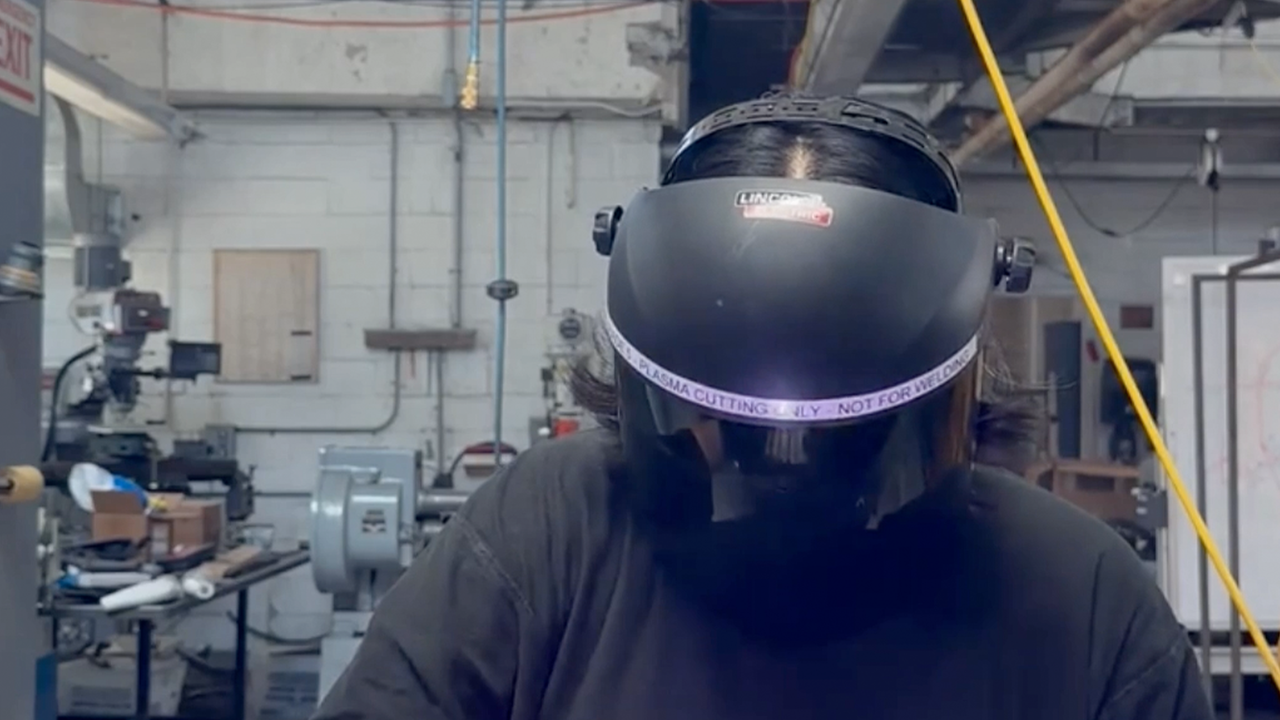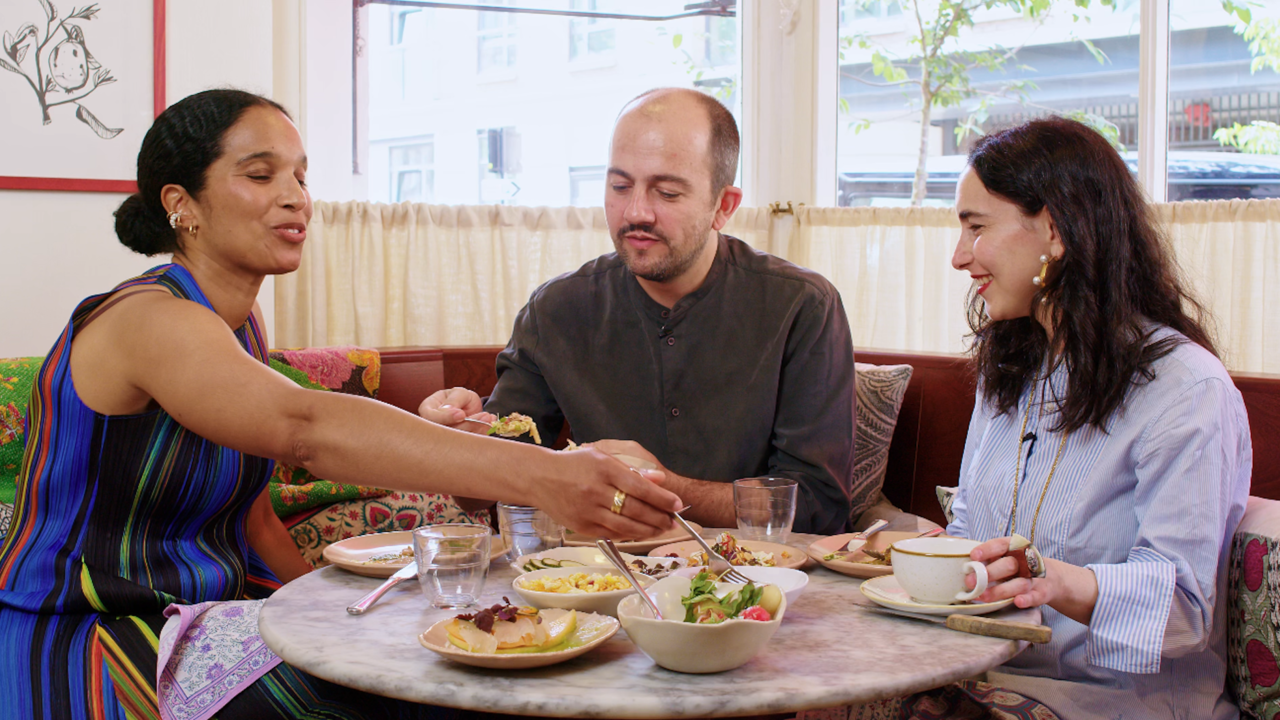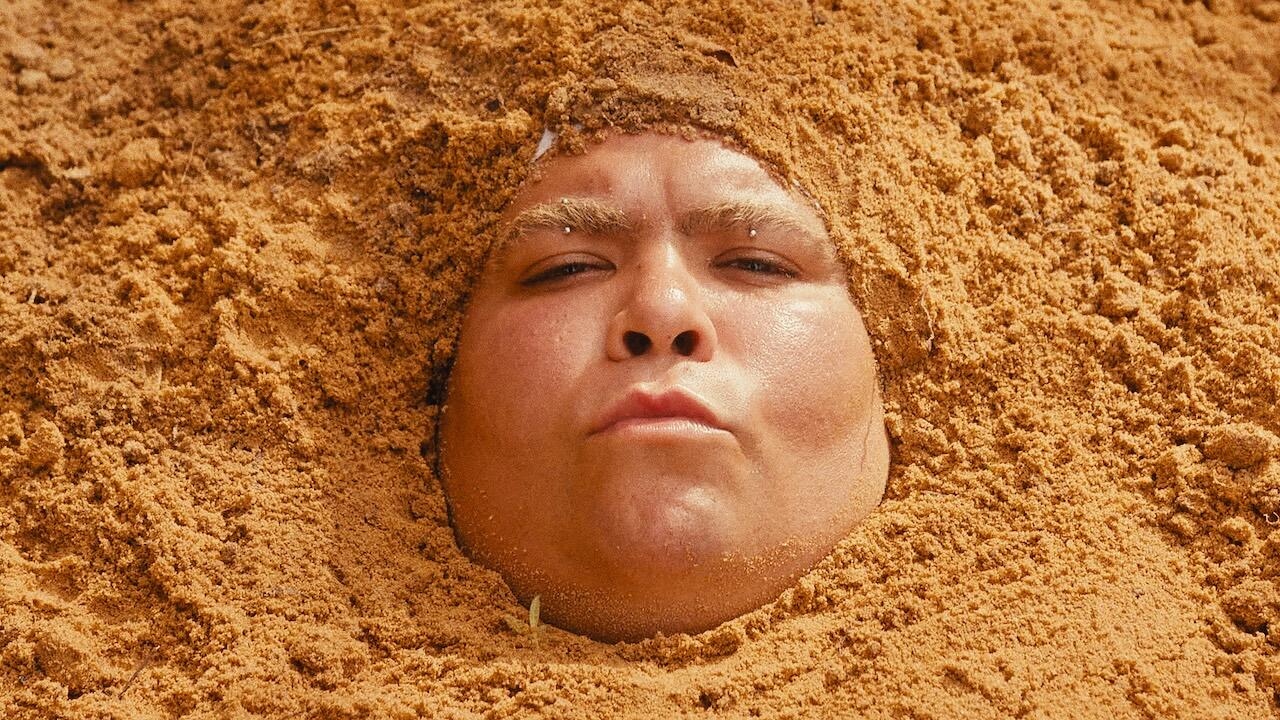Outside the Box
Tobias Madison talks to Elvia Wilk about the liberating effects of alienation, running an education department for MoMA PS1, New York this summer and why art should be a hobby
Tobias Madison talks to Elvia Wilk about the liberating effects of alienation, running an education department for MoMA PS1, New York this summer and why art should be a hobby

Elvia Wilk You recently had an exhibition at the Modern Institute in Glasgow, with Emanuel Rossetti and Stefan Tcherepnin, as part of the Glasgow International biennial.
Tobias Madison It was a continuation of the project Drip Event that I did with Emanuel and Stefan at the Power Station in Dallas last year. That show was based on a score that graphically articulated the flooding of the space, resulting in drips from the ceiling of the building’s ground floor onto a stage that was divided by art works hanging over it. In Glasgow the show itself became a score that orchestrated visitor movement: we built a stage and room divider, and showed a series of works that used disinfectant – some of it blown with air humidifiers throughout the space, some pumped over plastic planes. The visitor entered through a 1960s ‘house of horror’-style entrance and once inside there were limited options for movement; the viewer was just a foreign body within a machinery he or she couldn’t fully comprehend.
EW Why create such a controlled environment?
TM We’re interested in alienation as a kind of liberating force. In Dallas, for example, the mechanics of the exhibition space were made transparent – when you went upstairs it was clear that the architecture had been extended to be flooded and the drips were planned with a score. This could be seen as an extension of 1960s Institutional Critique, where a certain structure is revealed to you and you’re forced to navigate within that structure. That structure itself becomes the art work.
EW You applied this idea of alienation as liberation in your two-part show NO; NO; H and EP at Kunsthalle Zurich last year. In particular, you reproduced the floorplans of two other spaces in Zurich: the cinema AP News which you co-ran, and the club night House of Mixed Emotions at Longstreet Bar run by your friends Mathis Altmann, Lhaga Khoondor and Jan Vorisek. You wrote in a text about the show that only two possible reactions were possible: alienation, because it’s unclear what is being represented to someone unfamiliar with those locations, or disappointment, because it’s such a shallow representation.
TM With the floorplans, and also with the strung-tent work in that show, I was investigating alienation as a moment when representation falls apart. Any content is the viewer’s projection. While the floorplans aren’t faithful documentation, they aren’t sculpture either – even though they are made of welded iron bars. The vagueness of these works represents something that cannot be held within the institution.
EW Like most of the works in the show, the floorplans can be seen as contentless containers.
TM Right, like the video of the empty gallery spaces recorded by a flying drone on autopilot, which was also used as substitute lighting, or the fruit shipping containers that Emanuel and I collected and put lightbulbs inside. Essentially containers became models for other containers – horror vacui in which comparison becomes content.
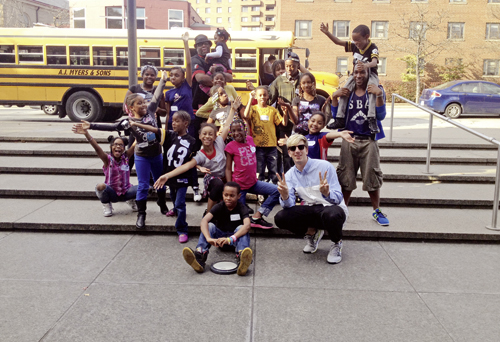
EW Whereas Institutional Critique employed subjective experience to criticize power systems, today there is a trend towards absolutism and objectivity as a form of critique. What’s your view?
TM It’s funny how objectivity would place the artist outside of any subjectification process. The alienation that we face in everyday life is not the classic Marxist notion of the producer alienated from their labour. It’s permanent, because we, and our friendships, are in infinite production and consumption. I think that re-appropriating that alienation is a way to singularize the viewer as a moment of becoming-knowing.
EW You’ve compared this type of alienation-by-choice to the kind one experiences in a nightclub or movie screening.
TM I think of a nightclub as a place to be alone amongst friends. The Zurich show was meant to create a set of parallel vectors of experience: the way the works operated, the visitor’s movements in and outside the space, the financial transactions of the exhibition, going to a club, or reading your email – the waste of these activities returning as material in the show. Banal activites would become the same as an art experience, and you’d be able to read all these different activities and movements on the same scale. The summary of these becomes a very abstract form of poetry.
EW Was the goal to reclaim the museum space by bringing social relationships into it – as per Relational Aesthetics – or to explicitly relocate social space outside of the institution?
TM I position myself against relational practices. What Relational Aesthetics would have tried to do is bring everything inside the institutional framework to alter that framework. My idea was to dislocate the institution from life experiences. I wanted the institution to become a side programme – a feedback loop or waste receptacle – for other events. On a financial level, the objects in the show were made from empty cardboard, used paper tissues, leftover steel bars from the museum’s renovation, and old technology from its basement. The budget for the show was used to support the outside events.
EW But in other situations, such as your project for 2013 Carnegie International, weren’t you bringing content to the institution rather than emptying it out?
TM For that project I organized a video-making workshop for children in the museum that was structured as a passepartout; they could use the museum framework for their own purposes and ended up ignoring its content. The videos provide very little information, or purposely-fractured information, about what happened.

EW Was there an educational component to the project?
TM Not really. When I visited the museum I followed a group of children who were on a class trip. They were being told a rehearsed story in very flat language about the museum’s collection. There was no space left for interpretation or any type of unique experience. The institution wants to behave like a text, where experimentation is possible but coherence is the ultimate goal. Art education is one of the tools that reinforce this stability. I was interested in how adults fetishize experimental activity as liberating, while it is an everyday occurrence for children.
EW You have an upcoming project at PS1 called Reinvestigating Education.
TM Jenny Schlenzka, an associate curator at MoMA PS1, saw the Carnegie project and approached me about programming a print shop that PS1 had acquired on the same block as the museum, which they intended to make into an off-space. I told her that I didn’t think an institution can simulate an artist-run space. It will always appear as this friendly annex to an institution aiming to widen the field of possible visitors – a cool connection point to a more urban or younger audience.
EW But isn’t it mutually beneficial?
TM I just didn’t want to be directly involved with that kind of space. My conversation with Jenny quickly shifted to a common interest in art for children and the problematics of art education. We came up with the idea to run the print shop entirely as an experimental education department, where artist projects would only be accessible to children. We wouldn’t think about it as something that educates children about art, but that opens a dialogue between children and artists, bypassing the institution.
EW In comparison, the other spaces you’ve co-run – New Jerseyy in Basel and the cinema AP News – were centred around a public of young artists who are clearly already embedded in the art scene.
TM Each space belonged to a very different context. In Zurich at the time, for instance, there was a strong need for a place like AP News, because everything in the city had been soaked up so quickly into very professionalized structures. There was no proper space for dialogue without social spectacle. I wanted to create a space that was alienating at first as a kind of protective layer, by calling it a movie theatre. A dark place where you have very little interaction with other people; an art space that did away with the paradigms of an art space.

EW Was there a similar motivation behind New Jerseyy?
TM AP News stemmed from what I learned with New Jerseyy. Emanuel Rossetti, Dan Solbach and I started New Jerseyy when we were very young – I think I was 20 – along with Daniel Baumann, so we just weren’t aware of a lot of the problems of inclusion and exclusion that come with that type of project. Over time it revealed itself as a career-machine.
EW For the artists or for those running the space?
TM For both. I withdrew from it over time, and my other collaborators ran the programming until it closed on New Year’s Eve, 2013. I do still think that New Jerseyy was an interesting and liberating place while it lasted.
EW There’s no reason you have to call yourself an artist to run a bar or a cinema or a school. Why not just stop calling it art and do what you want?
TM Calling yourself an artist is appealing because art seems like the space where the most things are possible right now. Today art occupies the position that poetry, rock music or fashion once did, as a collecting vessel for anyone who wants to say something about the ‘now’, or doesn’t want to put a label on what he or she is doing. In different cycles, possibilities like this appear. It’s when you look at the art system in detail that you find it has its own very strict rules about how to operate.
EW You’re involved in music too, right?
TM I started playing in a band called Solar Lice, which formed directly out of the project in Dallas. Instead of having an opening for that show, we assembled a band from friends who were present and two drummers from the Texas hardcore scene, including Gregory Ruppe, who manages the Power Station. We held a two-hour, improvised concert along with the water dripping installation and recorded a double LP at Issue Project Room in Brooklyn as the catalogue for the show. We were recently on tour in the UK that started with a concert at the Modern Institute.
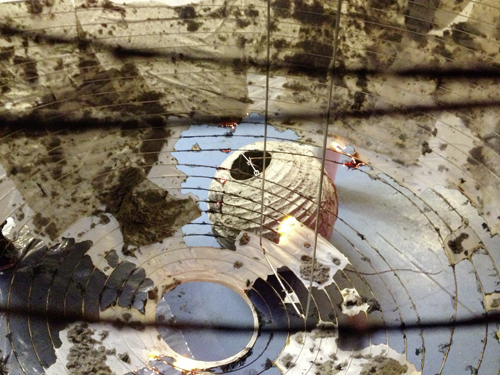
EW The band model seems to makes a lot of sense given your practice. Do you ever think about being a Claire Fontaine-style collective but with revolving members?
TM I’m not interested in that type of solidification. Even when I’m working within a set structure I try to bring it to a state of meltdown. I’m not interested in the male-capitalist trope of the artist as someone who formulates an idea and masters it in a set of variations. If I want a smart product I can go to Dover Street Market. That sort of savviness feeds into the market drive towards clarity; to make products easy to transport between contexts. Then again, ambiguity creates a similar scenario: the financial markets that trade with exciting unknowns, for example. I look for beauty somewhere else.
EW You often use writing to give your projects another voice. For instance, as a component of the show at Kunsthalle Zurich you sent out eight newsletters during the course of the exhibition, which doubled as invitations to outside events.
TM The newsletters were written in changing tones, some very personal, some official. One was just a list of excuses for replying late with some random information. They turned the official PR language into something more like poetry, or just stuttering. The email addresses were gathered from several gallery mailing lists which I didn’t clean up, so the more mailing lists a person was on, the more emails they would get. The better connected you were, the more you got spammed. I used a scrambler so the mails were sent from different addresses – there was potential for real confusion.
EW So you wanted to reveal the codified language and behaviour surrounding art exhibitions by scrambling it?
TM I don’t think the artist’s role is to ‘reveal’ something. The artist has had many roles throughout time: ‘the hobby-inventor’, ‘the hobby-detective’, ‘the hobby-writer’. Now artists seem to want to cut the hobby aspect and be ‘the start-up’. But calling art making a hobby is a recognition that experimentation can lead to potential failure. I think it is the only space where a voice can be formulated that irritates – or overwrites – the ones we are used to.













